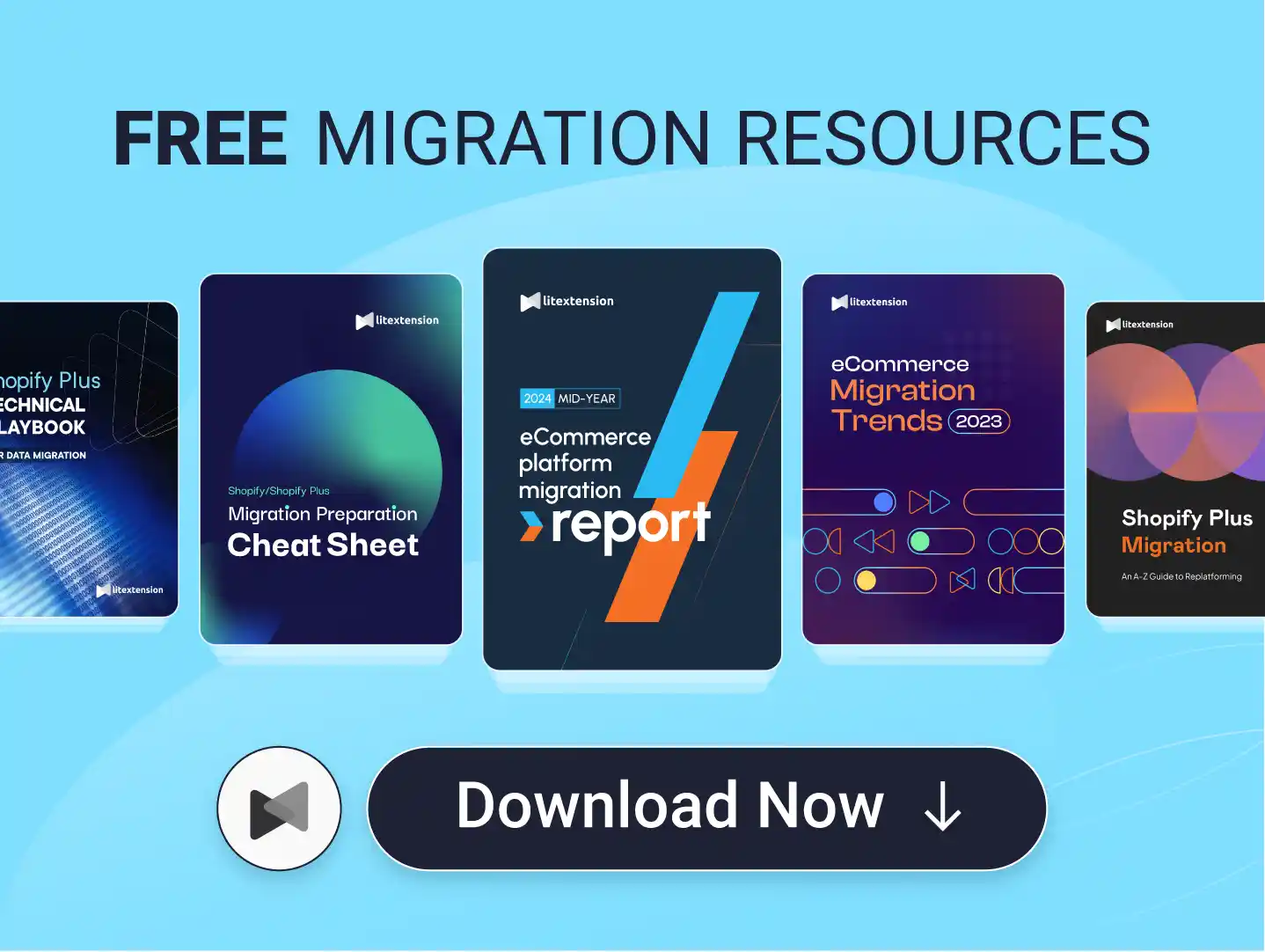Looking for eCommerce promotion ideas that actually work? You’re in the right place. Over the years, marketers have tested hundreds of promotions, yet only a handful was the proven for ecommerce success. These are the tactics that wins customer trust, sparks curiosity, and motivates quicker buying decisions. In this introduction, we highlight promotion strategies built to help you boost sales stronger, whether you're just starting out or scaling fast.
What makes this guide even more useful is that every idea is something you can use right now, without complex tools or large budgets. From creative discount structures to value-packed bundles and reward-driven programs, these approaches will help you convert more visitors and keep customers coming back.
Let’s explore the ideas that consistently drive real, measurable results for online stores. Hence, to help you meet (and even surpass) all those expectations, our team has compiled:
Let's jump in!
45 Proven eCommerce Promotion Ideas to Increase Sales in 2025
Promotions can do far more than drive short-term sales, but the key is not to throw them at random. Instead, your campaigns should be visible, strategic, and aligned with how shoppers actually behave, as shown in the 45 proven eCommerce promotion ideas below:
#1. Launch seasonal campaigns
For decades, seasonal promotions have been among the most reliable opportunities to engage customers, as they can align with existing moods and demand. After all, shoppers are already primed to buy during holidays like Christmas, Valentine’s Day, or even summer vacation. Your only job is to meet them where they are mentally and emotionally, then guide them toward your store instead of a competitor’s!
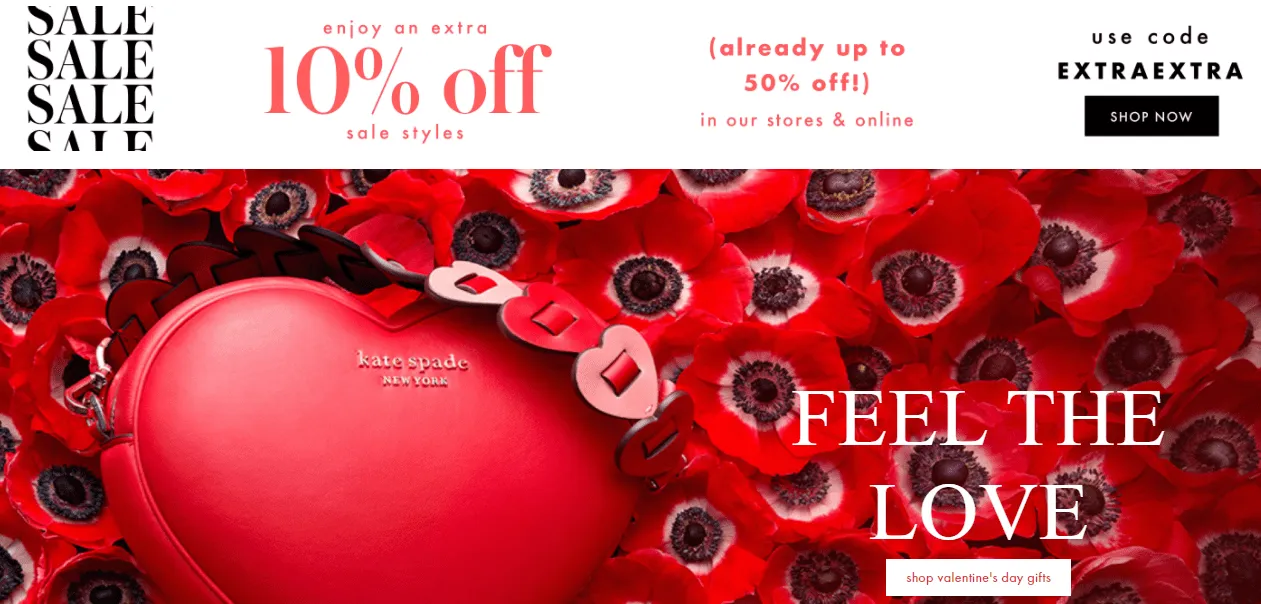
To make these eCommerce promotion ideas work, you should first analyze your past sales data to spot demand spikes and prepare campaigns early.
Make sure to think beyond the obvious holidays; for instance, Mother’s Day for jewelry or Halloween for party supplies can still be equally powerful! After that, design promotions that feel tied to the moment, including themed bundles, seasonal landing pages, and cohesive imagery across email and social.
And most importantly, starting early does matter. A 2024 analysis by Alexander Jarvis found that retailers who launched seasonal marketing early lifted conversions by up to 10%!
#2. Plan two-week promotional blasts
Although seasonal campaigns provide the big picture, they can lose momentum if left to run on autopilot.
For that reason, many brands layer in two-week promotional blasts during the season. These are concentrated waves of communication (usually a sequence of 5–7 emails supported by ads) that sustain urgency once the main campaign is live.
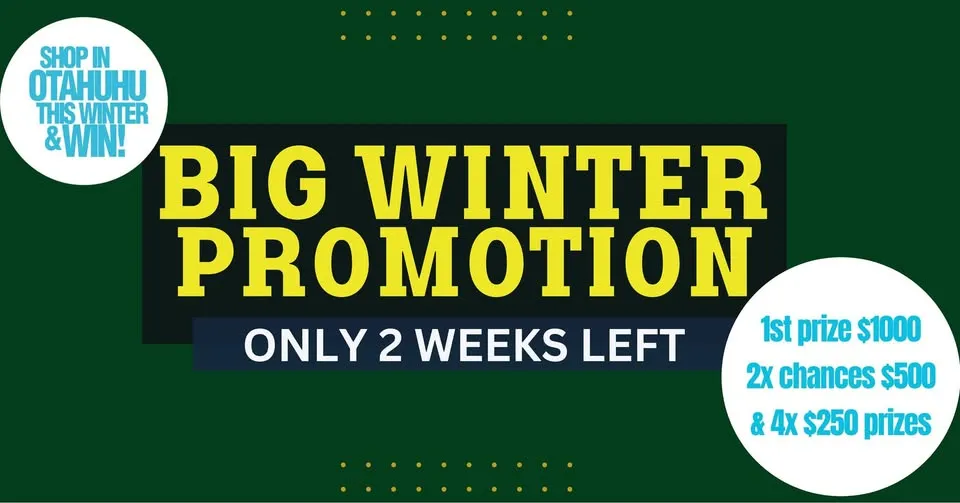
And remember, execution is about pacing. You can start with teasers that build anticipation, then roll out product highlights, special perks, and finally a “last chance” reminder as the campaign closes. Each touchpoint should feel like a natural continuation of the seasonal theme, rather than a standalone offer. This rhythm ensures your brand stays visible and persuasive throughout the two-week window, not just at launch.
#3. Create back-to-school or holiday campaigns
Once you've learned how to keep momentum alive, the next eCommerce promotion ideas should be tailoring campaigns to life stages or cultural moments, such as back-to-school or holiday shopping.
Let's take back-to-school shopping as an example. In this case, you can segment your audience and speak directly to their specific context: parents looking for affordable supplies, college students setting up dorms, or teachers buying in bulk. Also, during the holidays, you should emphasize gift guides, bundles, and shipping deadlines to ease shopper anxiety.
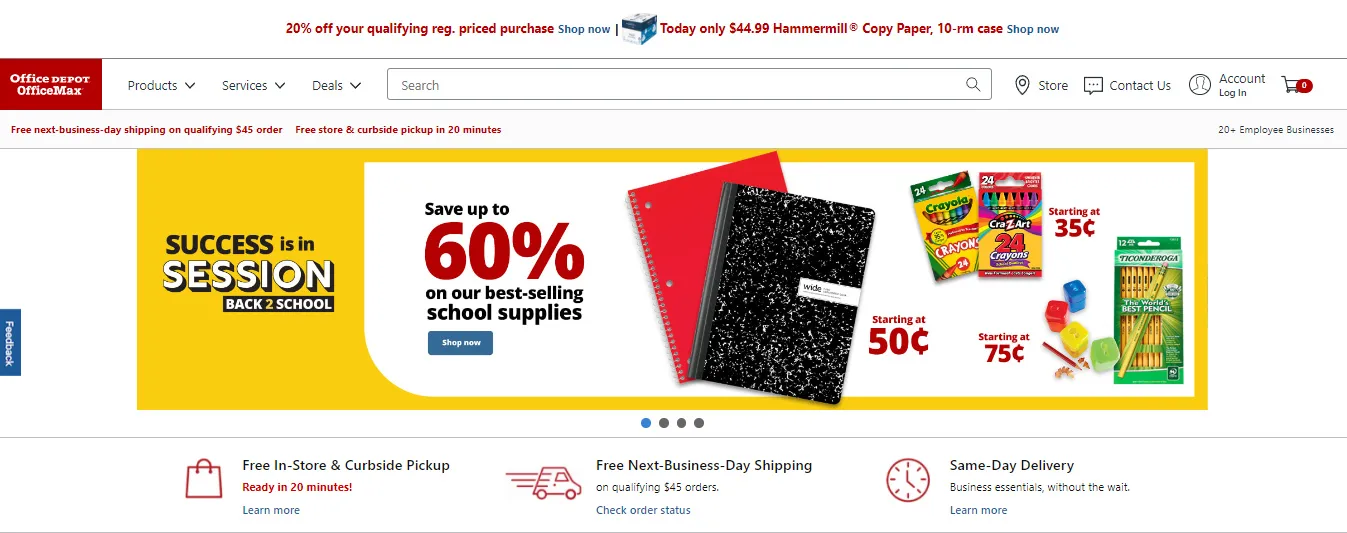
#4. Introduce ‘deal of the day' offers
Holiday and back-to-school campaigns often feel broad, so a sharp “deal of the day” can cut through the noise. These one-day offers spotlight a single product at a deep discount, backed by a visible countdown timer and clear messaging across email, homepage, and push notifications.
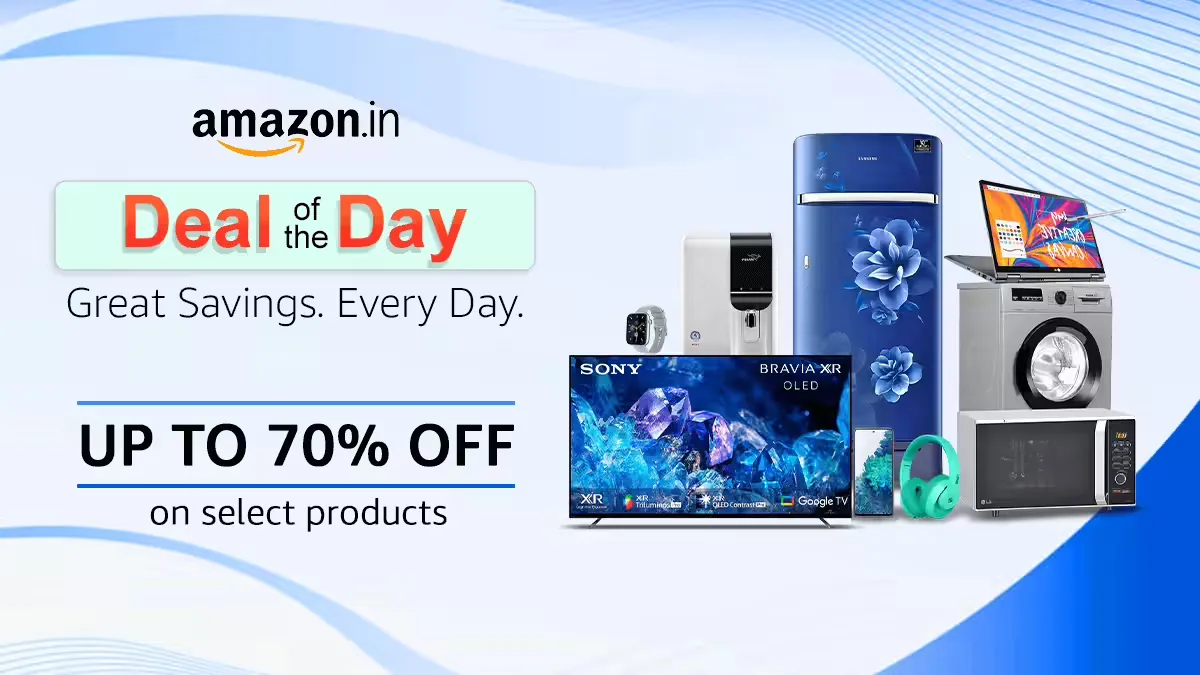
Plus, the tactic also works well alongside seasonal or two-week campaigns because it breaks the routine. Even customers who ignored earlier messages may be compelled to act when they know the offer disappears tonight. Make sure you carefully choose products that appeal broadly or tie to current trends, then pair the deal with cross-sells to boost basket size.
#5. Run flash sales with limited stock
If a daily deal adds sharpness, then flash sales bring intensity. They compress both time and inventory to create an urgency spike that few customers can resist! Typically lasting just a few hours, these eCommerce promotion ideas work best when teased in advance but revealed suddenly, giving people little chance to hesitate.
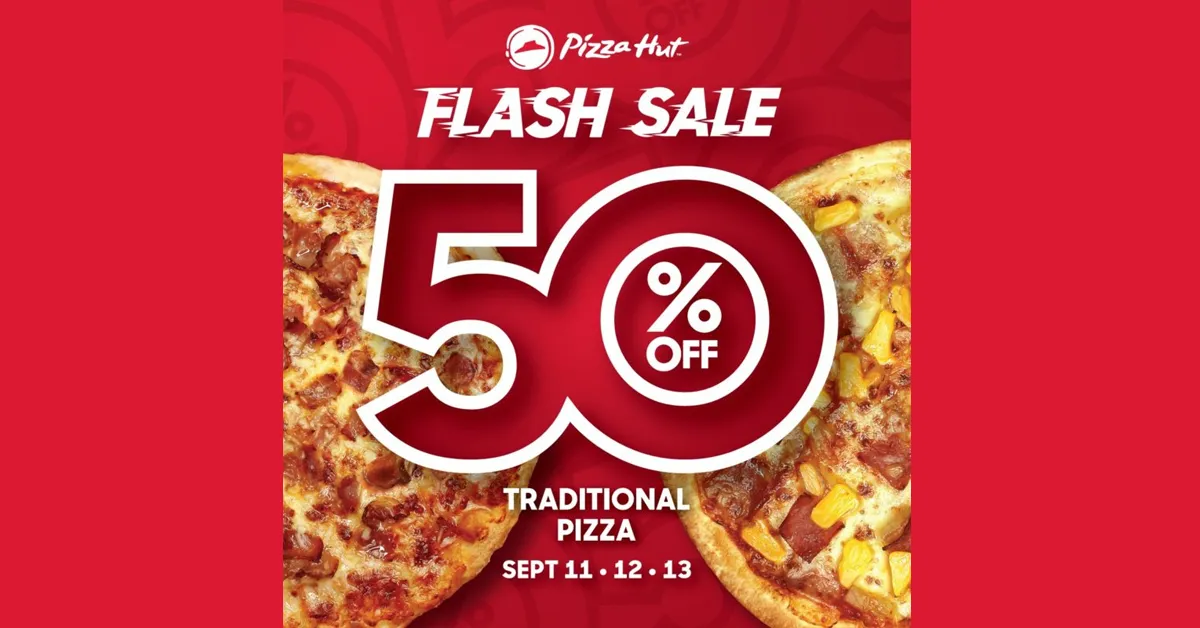
Also, make stock scarcity visible with messages like “only 5 left” and prioritize mobile readiness, since shoppers often act quite quickly on these offers from their phones. In fact, flash sales on mobile channels convert about 48% better than desktop sales because they allow for quick, impulsive buying!
#6. Experiment with mystery discounts
After a burst of predictable time-bound deals, shoppers sometimes crave variety. Mystery discounts reintroduce excitement by adding an element of chance, be it a spin-the-wheel pop-up, scratch card, or surprise discount code. The unknown keeps customers engaged and makes even a modest discount feel like a win!
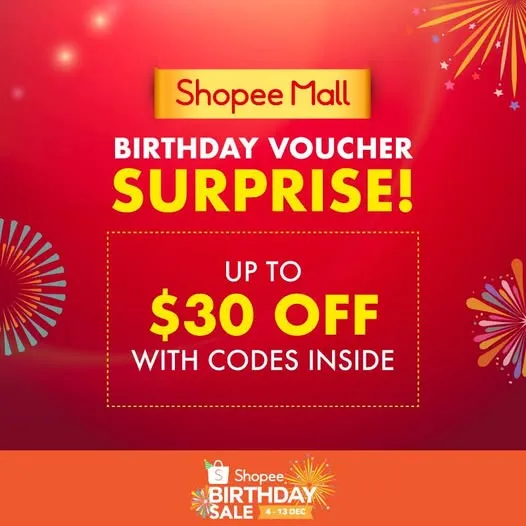
To pull this off, you should design the reveal mechanic in a way that feels playful rather than gimmicky, and set discount ranges that are attractive but sustainable. Also, don't forget to track redemption rates and customer sentiment: if shoppers consistently feel the mystery rewards are too low, the tactic can backfire!
#7. Highlight limited-time promotions
Of course, mystery isn't always what customers want; sometimes clarity and deadlines are more persuasive! That's where limited-time promotions are among the best eCommerce promotion ideas. Instead of vague “limited offers,” you can use explicit timeframes with visible countdown timers across banners, product pages, and checkout.
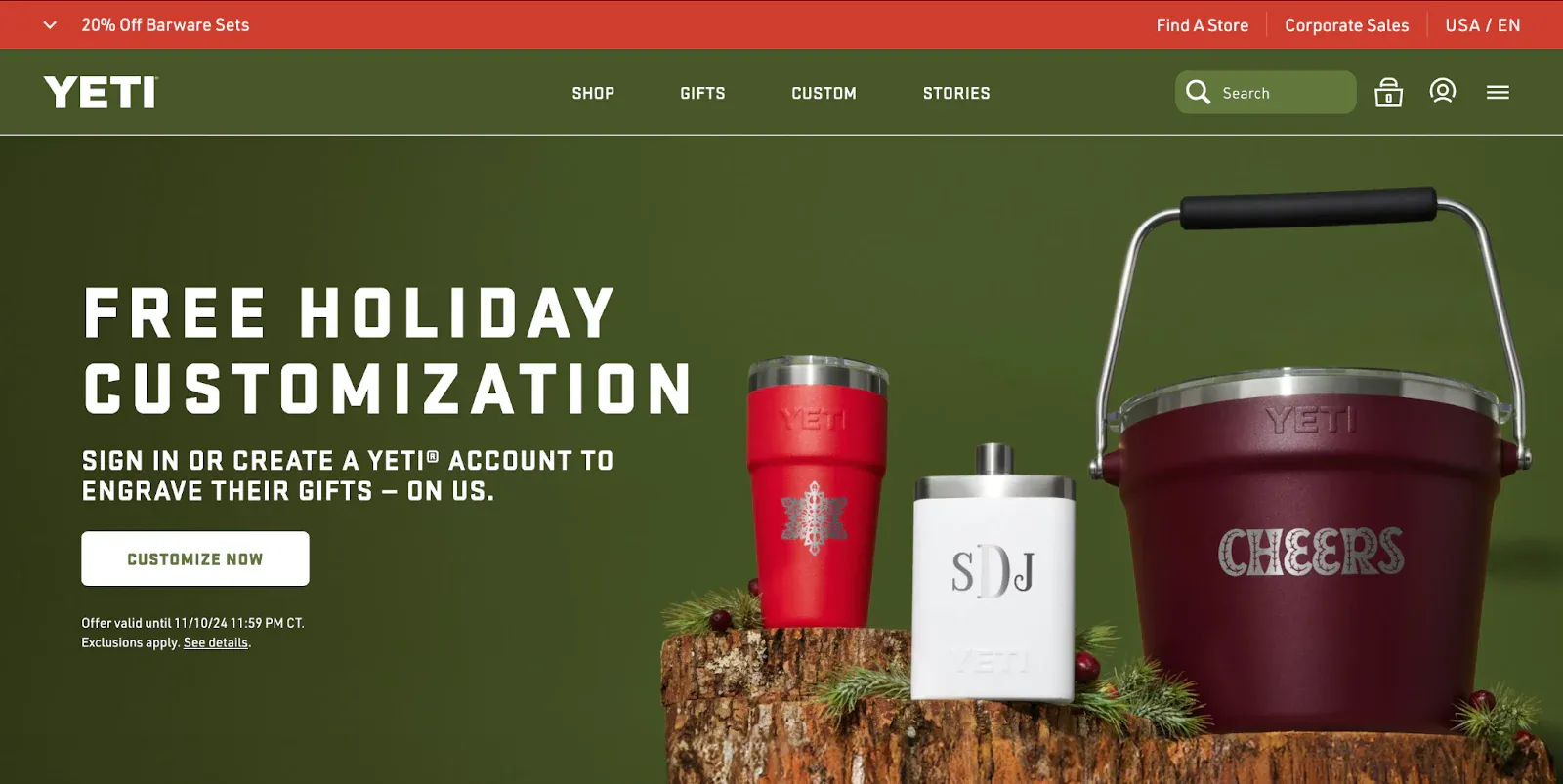
Remember to reinforce the timeline through email and ads, so the urgency feels consistent, regardless of where the shopper interacts with your brand. Plus, adding small perks (e.g., free returns or shipping within the time window) can make the offer even harder to resist. When you constantly make time pressure feel tangible like that, customers will learn to act quickly whenever your store announces a promotion!
#8. Use exit-intent popups for last-minute conversions
Even with strong urgency tactics, some visitors will still abandon your site. Fortunately, exit-intent popups give you one last opportunity to recover those shoppers by presenting a tailored offer just as they're about to leave.
These popups work best when they feel helpful rather than intrusive. You can offer a discount code, highlight free shipping, or remind them of the items in their cart. Many stores even add social proof like “200 others purchased this today” to reduce hesitation.
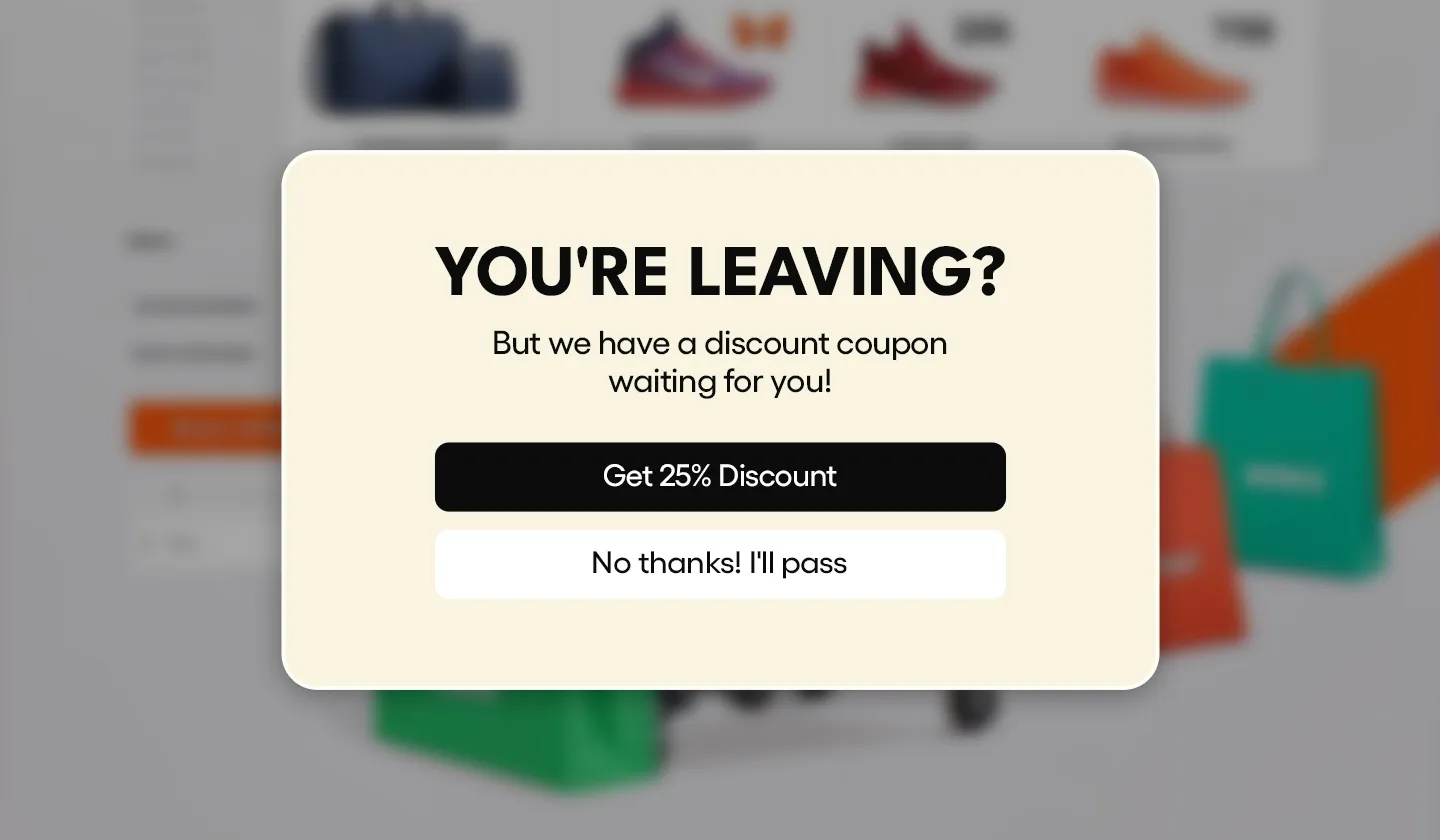
Also, if possible, you should test different formats and incentives until you find which message persuades your audience most effectively. This way, even failed visits can become salvaged sales.
#9. Promote clearance discounts strategically
Where exit-intent tactics save individual transactions, clearance discounts tackle a bigger issue: clearing space for new stock. Done haphazardly, this clearance can cheapen your brand; done strategically, it becomes an opportunity for both you and your customers!
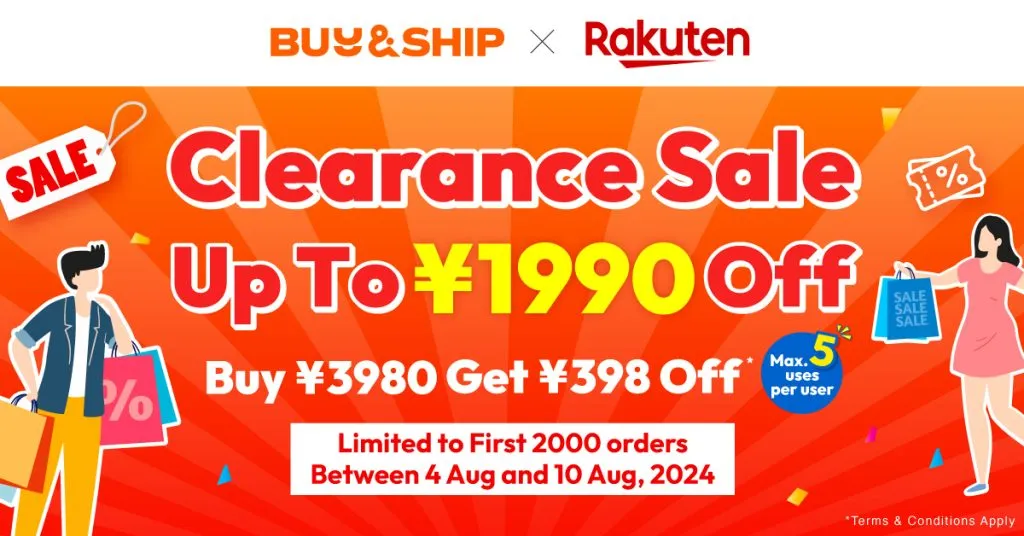
To execute these eCommerce promotion ideas, you should create a dedicated clearance section and set discount levels that balance urgency with profitability.
After that, launch these campaigns just before seasonal arrivals, so customers see the natural logic in your markdowns. You can even pair clearance items with bestsellers to raise perceived value. Just like that, clearance serves both your operational goals and your customers' hunt for deals!
#10. Surprise customers with wishlist discounts
Clearance promotions highlight what you want to sell, but it's the wishlist discounts that highlight what customers already want to buy. By sending a targeted email or notification offering a limited-time discount on wishlist items, you connect with their personal preferences and create delight!
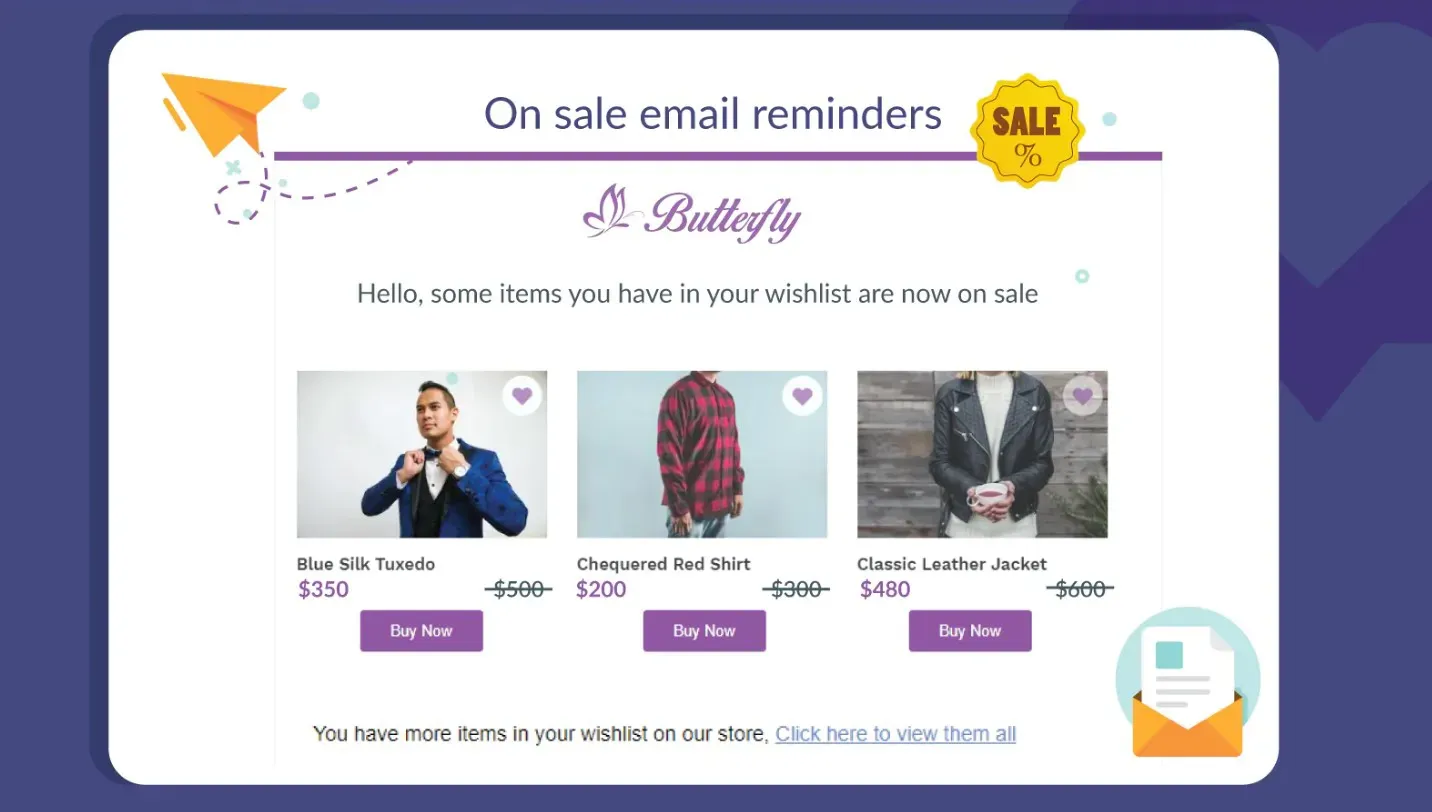
Needless to say, implementing this requires reliable wishlist functionality and automation that can trigger offers. You also need to keep the message as direct and personalized as possible (for example, “One of your saved items is 20% off for the next 24 hours.”)
Plus, we suggest combining this with urgency or low-stock cues to make it even more compelling! The result is likely not just higher conversion rates but also stronger loyalty, since customers feel your brand truly understands and rewards their interests.
#11. Offer BOGO and multi-buy deals
After surprising customers with wishlist discounts, you can push them further with value-driven promotions like Buy-One-Get-One (BOGO) or multi-buy bundles. These eCommerce promotion ideas work because shoppers immediately see more for their money, and psychologically, they feel like they are missing out if they don't “take the freebie.”
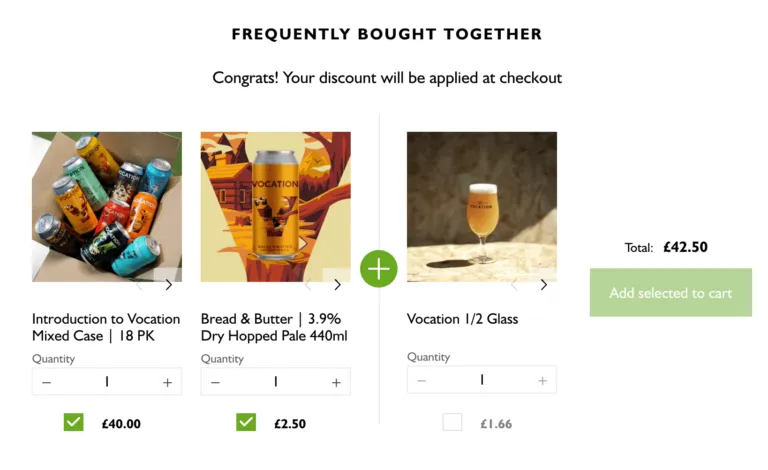
To put this into practice, you should first start analyzing which of your products are either fast-moving consumables or items where people naturally buy multiples (snacks, cosmetics, fashion basics).
After that, create bundle rules that make sense financially; for instance, if your margin allows for a 40%, you can comfortably offer one unit free when customers buy two. Plus, don't forget to decide how you'll surface the offer. The most effective placements are entry popups when a shopper first arrives, banners on product pages, and reminders in the mini-cart.
#12. Try tiered discount models
Where BOGO offers push people toward multiples, tiered discounts give shoppers a clear ladder to climb.
The appeal is straightforward: the more they spend, the bigger their savings! For instance, you could offer 10% off orders above $50, 20% off those above $100, and 30% off above $200. Each threshold is a psychological anchor that persuades customers to add “just one more item” to qualify.
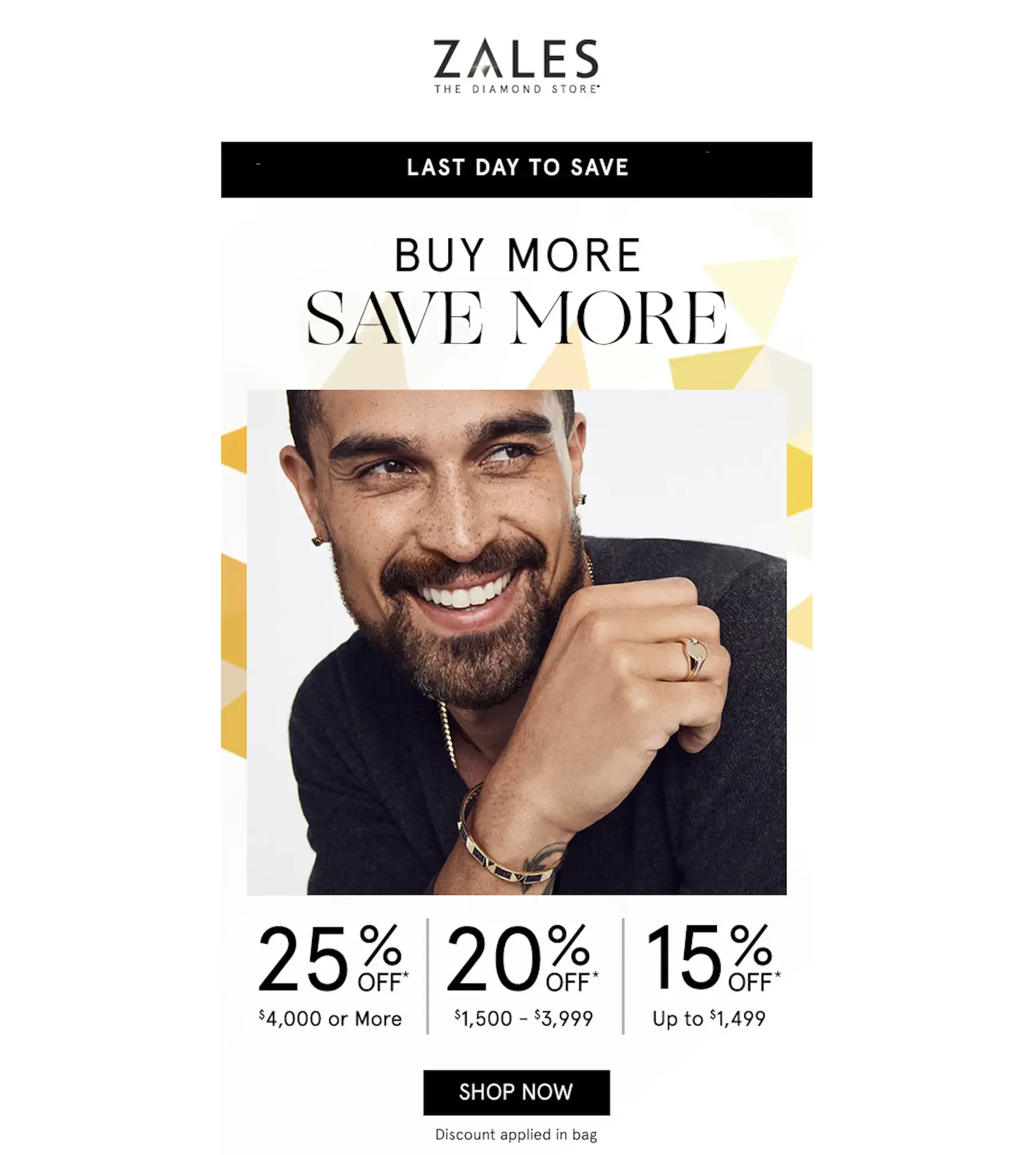
However, you should study your average order value (AOV) before implementing this tactic. For example, if your current AOV is $65, then your first tier should be slightly above that (say, $75) so you encourage upselling without making the bar too high. The second and third tiers should stretch customer expectations but still be reachable. And once you've set the brackets, pay attention to clear visual cues: a progress bar on the cart page showing “Spend $12 more to unlock 20% off” often converts exceptionally well!
#13. Provide welcome discounts for first-time shoppers
Once you've maximized order values with tiered discounts, the next focus is on capturing new customers. After all, first-time shoppers are the hardest to convert because they don't yet trust your brand; a welcome discount reduces that barrier by giving them a reason to take a risk!
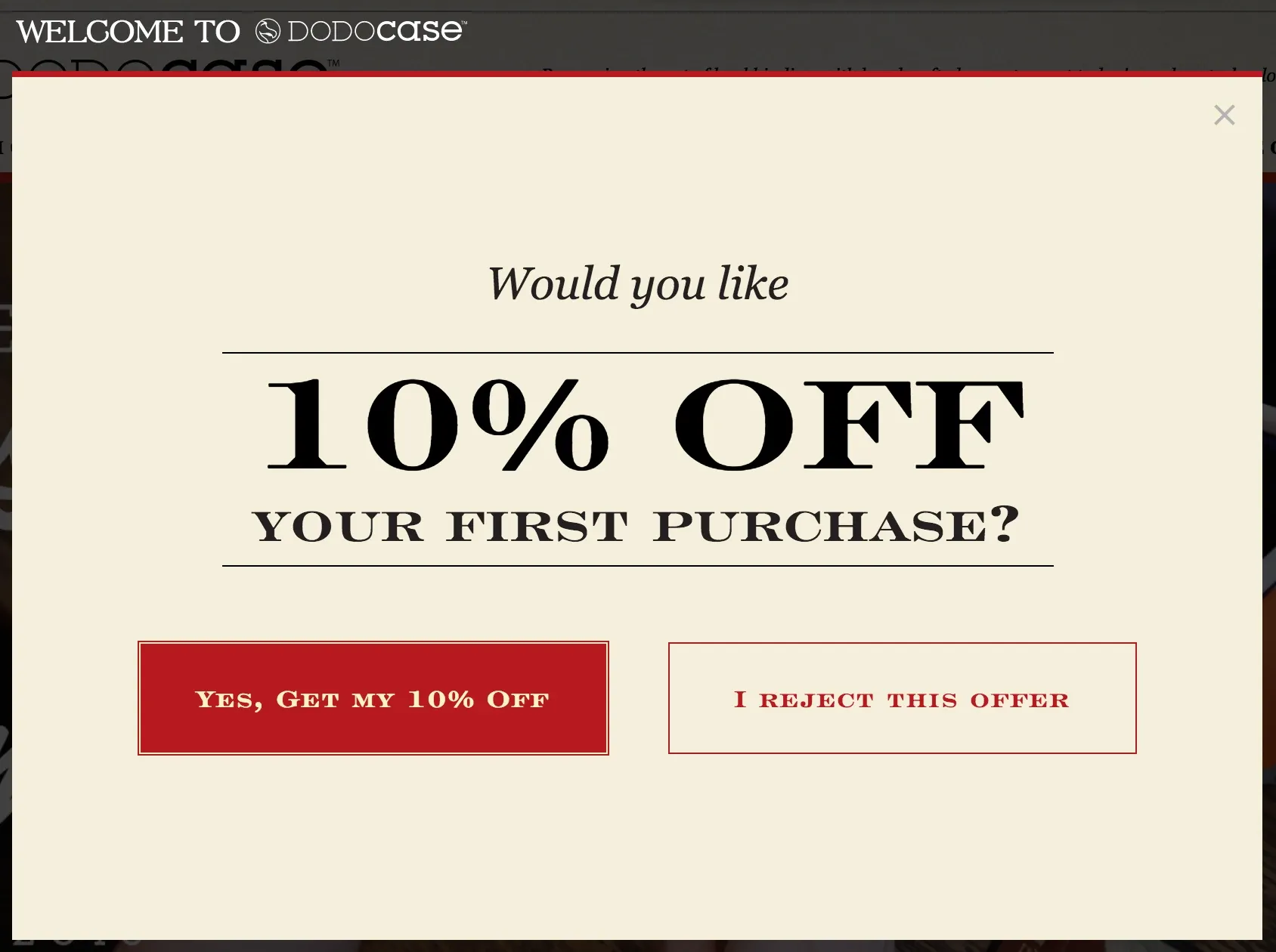
Here's how to carry out these eCommerce promotion ideas.
- First, set up an automated trigger on your site that detects new visitors: it could be an entry popup offering “15% off your first order” in exchange for an email signup. Make sure the popup is mobile-optimized and doesn't block navigation, since too much friction could backfire.
- And once a visitor submits their email, an instant automated message should deliver the discount code along with a warm brand introduction. The immediacy of this stage matters: if a shopper has to wait even an hour for the code, they may abandon the purchase! In addition, you should also set clear conditions. For example, apply the discount only on first-time orders and limit its expiry to 48–72 hours.
#14. Reward newsletter signups with instant savings
Welcome discounts help convert first-time shoppers, but a newsletter signup incentive ensures you don't just capture a sale but also long-term communication channels. The goal here is to exchange a small, immediate perk for the ability to engage with customers repeatedly over email.
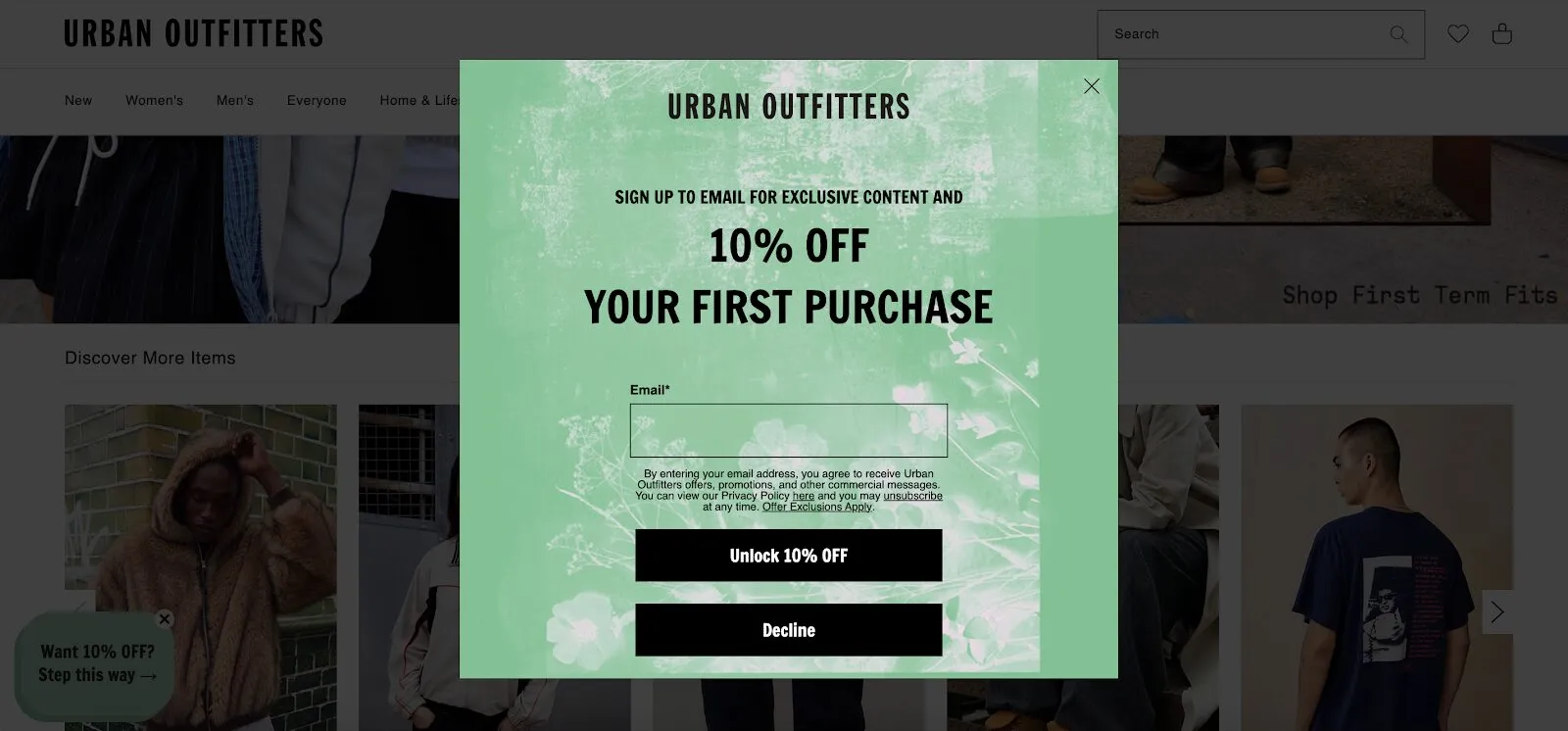
Visibility is very important, so signup forms should appear in multiple contexts: a persistent banner on the homepage, embedded forms within blog posts or product guides, and exit-intent popups that trigger when visitors move to leave. Plus, each placement targets a different shopper mindset, including those casually browsing, those actively reading, and those about to exit.
Most importantly, the offer should always be clear and straightforward, like “Subscribe now and get $10 off today.” Since shoppers always expect direct value, vague promises such as “special updates” should be avoided at all costs!
#15. Incentivize early bird pre-orders
Once you've built a subscriber list through newsletter rewards, you can leverage it to generate buzz and secure revenue before products even launch. Early bird pre-orders not only focus on sales but also help build anticipation, which further helps solidify customer commitment!
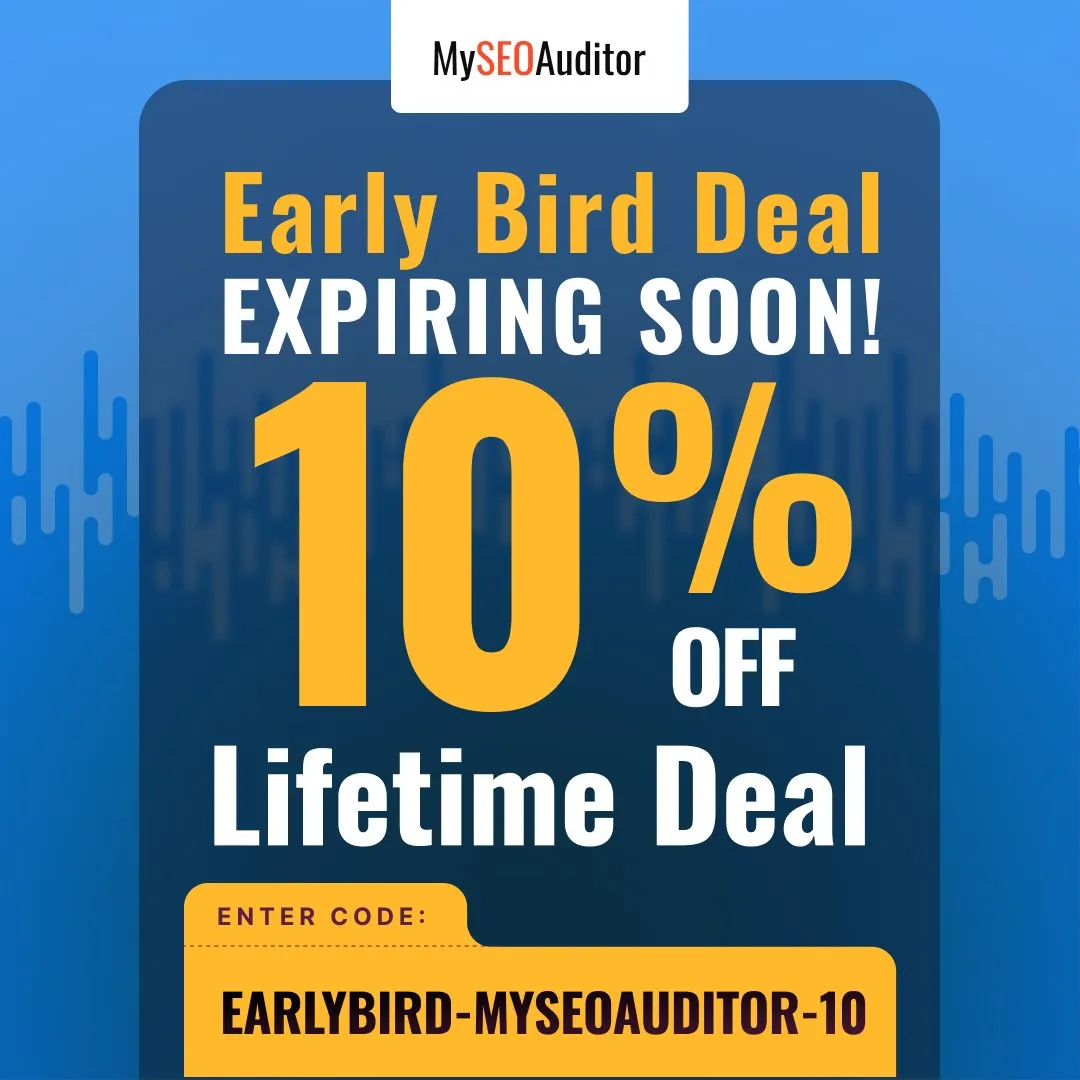
In order for these eCommerce promotion ideas to work, the product must be presented as something worth waiting for. Hence, you should create landing pages that showcase eye-catching (yet detailed and accurate) product visuals and estimated delivery dates.
Also, don't forget about the incentive. A common structure is tiered pre-order rewards: the earliest buyers get the best benefits, such as 15% off plus free shipping, while later customers receive a smaller discount.
Another approach is bundling: offering an exclusive gift only available to pre-order customers. For example, if your business sells books or novels, the bundles may include signed bookplates or bonus chapters for early buyers.
#16. Offer free shipping as a conversion trigger
Early bird pre-orders get people to commit ahead of time, but free shipping is often the lever that closes the deal at checkout. Not to mention, many shoppers hate the feeling of hidden costs; research from eMarketer shows that 48% of U.S. consumers abandon carts due to high extra costs, including shipping fees!
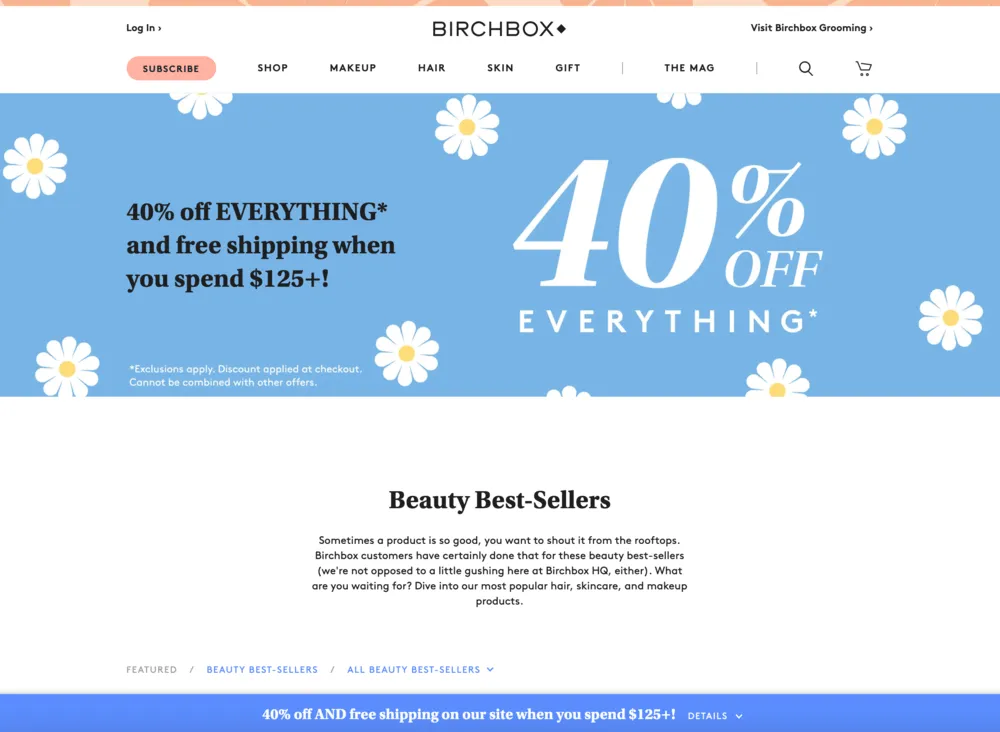
For this reason, we suggest using free shipping strategically and setting a threshold that encourages higher spend without eroding margins. For instance, if your average order value is $42, offering free shipping above $50 nudges shoppers to add one more item. Plus, you should display this threshold clearly on product pages and in the cart with a progress bar (“Add $8 more to unlock free shipping”). That way, the incentive feels more achievable and can turn into a motivator rather than a passive perk.
#17. Add free gifts with purchases
Just like free shipping, free gifts can also bring quite a delight. At the end of the day, who doesn't love the feeling of getting something extra? When done well, these eCommerce promotion ideas make buyers feel they're getting more value without you cutting into margins with steep discounts.
In our opinion, the gifts should align with your brand; for example, if you run a beauty store, a travel-size sample works perfectly! Avoid irrelevant gifts that add clutter but have no perceived value.
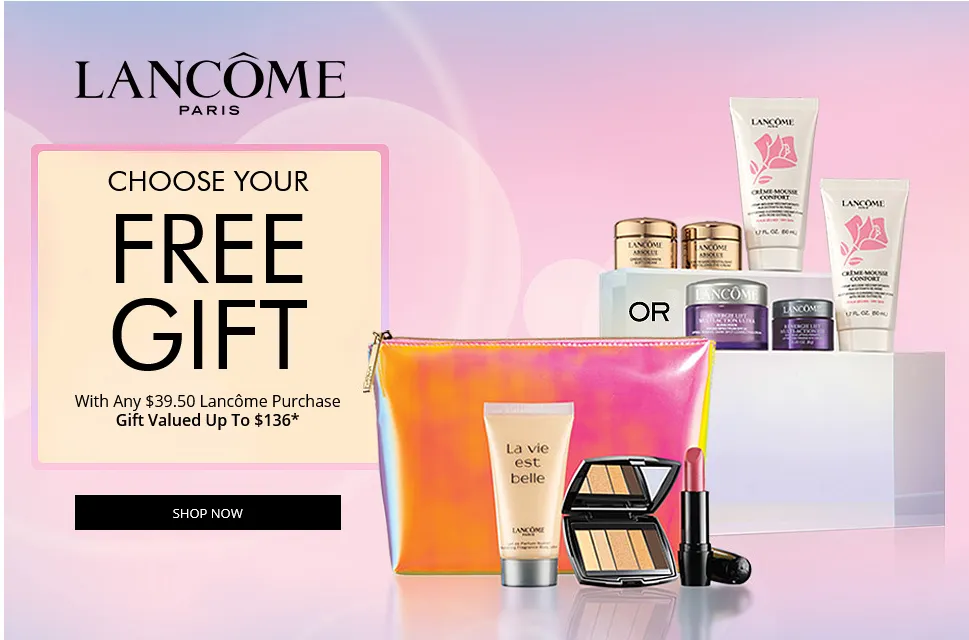
Once done, you can decide on the qualifying condition. Some stores set a minimum spend (“Free gift on orders above $75”); meanwhile, others tie gifts to specific product categories to encourage trial of new lines. It's entirely up to you! And lastly, after the customers purchase the items, follow up with an email highlighting how to use the gift and linking to the full-size version.
#18. Introduce cashback programs
Besides free gifts, another great strategy that leverages delayed reward psychology is cashback.
In short, customers feel that they've “saved money” by earning something back, even though they've already spent. As a result, the initial purchase feels less painful and increases the likelihood of a repeat visit! We recommend this strategy primarily for high-margin items, where returning 5–10% still leaves room for profit.
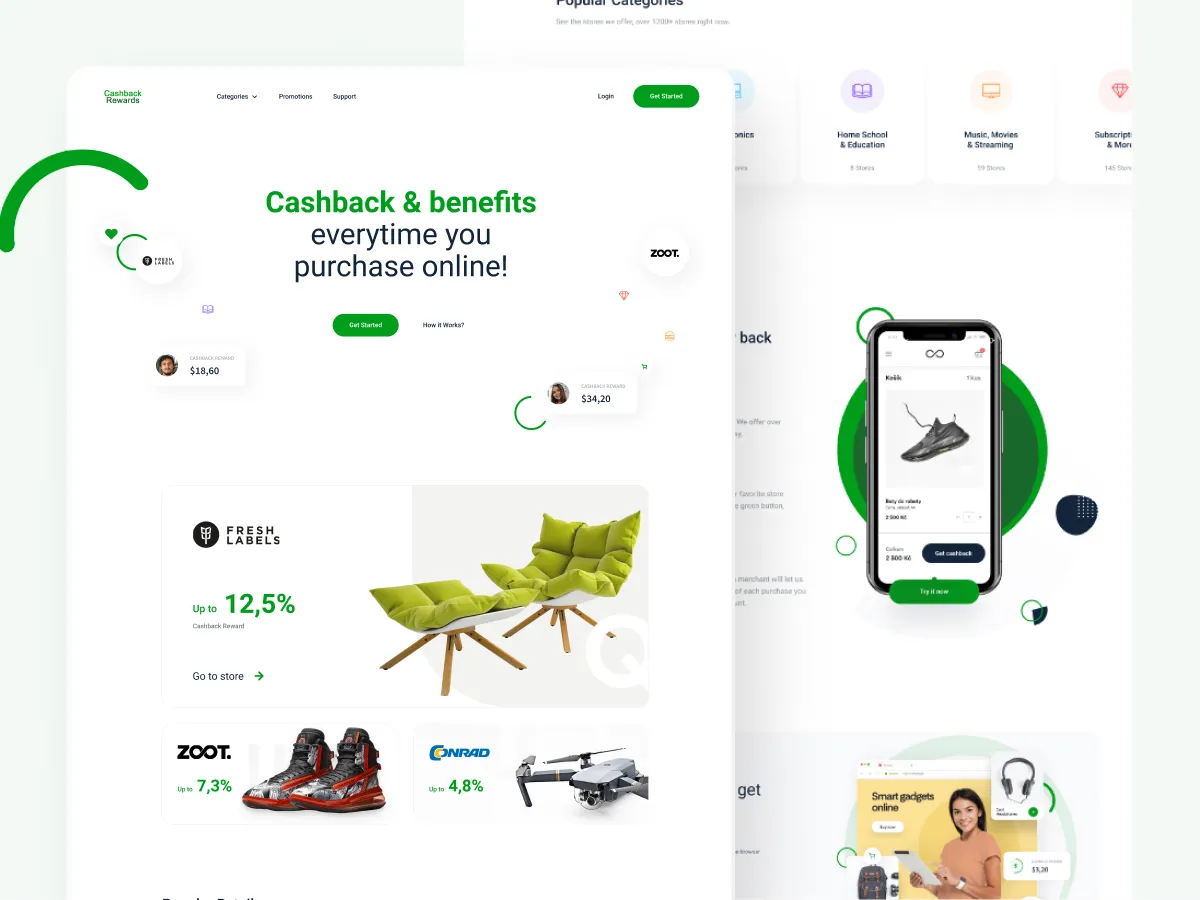
The common choices are between instant store credit or delayed rewards:
- Instant credit (“Get $10 back on your account after purchase”) creates a loop that drives quick repeat purchases.
- Delayed cashback feels like a rebate and reinforces long-term loyalty.
Whichever you choose, you should position cashback prominently at checkout and in post-purchase emails, so customers know the benefit is coming.
#19. Run inclusive or community-based discounts
In addition to the cashback appeal, inclusive promotions deepen brand reputation by acknowledging specific groups. For example, discounts for students, military personnel, seniors, or frontline workers show that your brand stands for more than transactions and actually values its community.
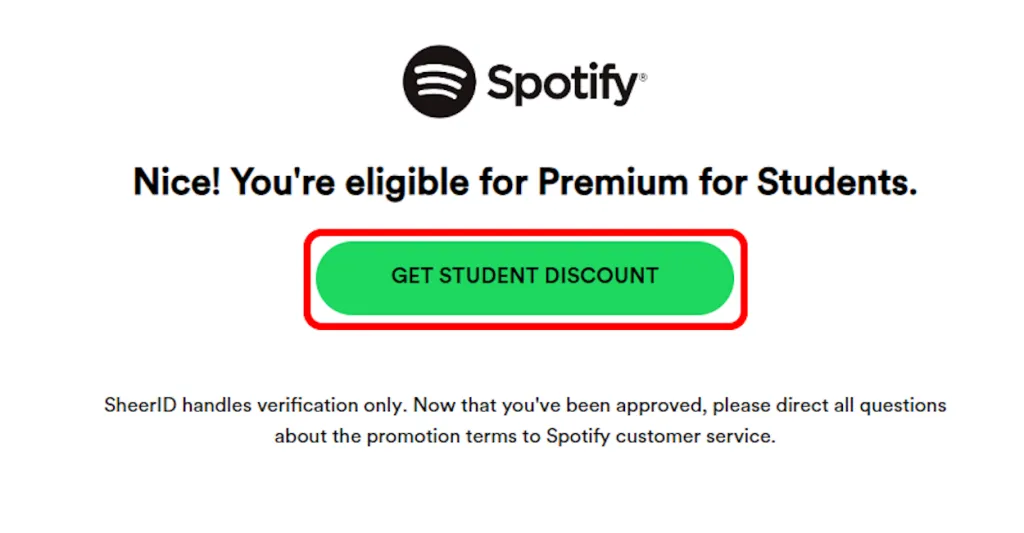
The standard steps to carry out these eCommerce promotion ideas are as follows:
- First, define who qualifies and set up verification (student IDs, military status checks) to prevent misuse.
- Build a landing page dedicated to the initiative, explaining not just the discount but why you're offering it.
- Then, promote the campaign in the communities it's designed for, whether through schools, associations, or local organizations.
Since customers increasingly want to support brands aligned with their values, inclusive discounts like these become both an ethical and financial advantage. Done authentically, this tactic builds loyalty that goes beyond price and cements your brand identity!
#20. Launch loyalty and rewards programs
Even with all the discounts, customers' long-term behaviors can only be systematized through effective loyalty programs. Indeed, according to the Global Customer Loyalty Report 2024, 9 out of 10 organizations with a loyalty program reported positive ROI, averaging over 40%.
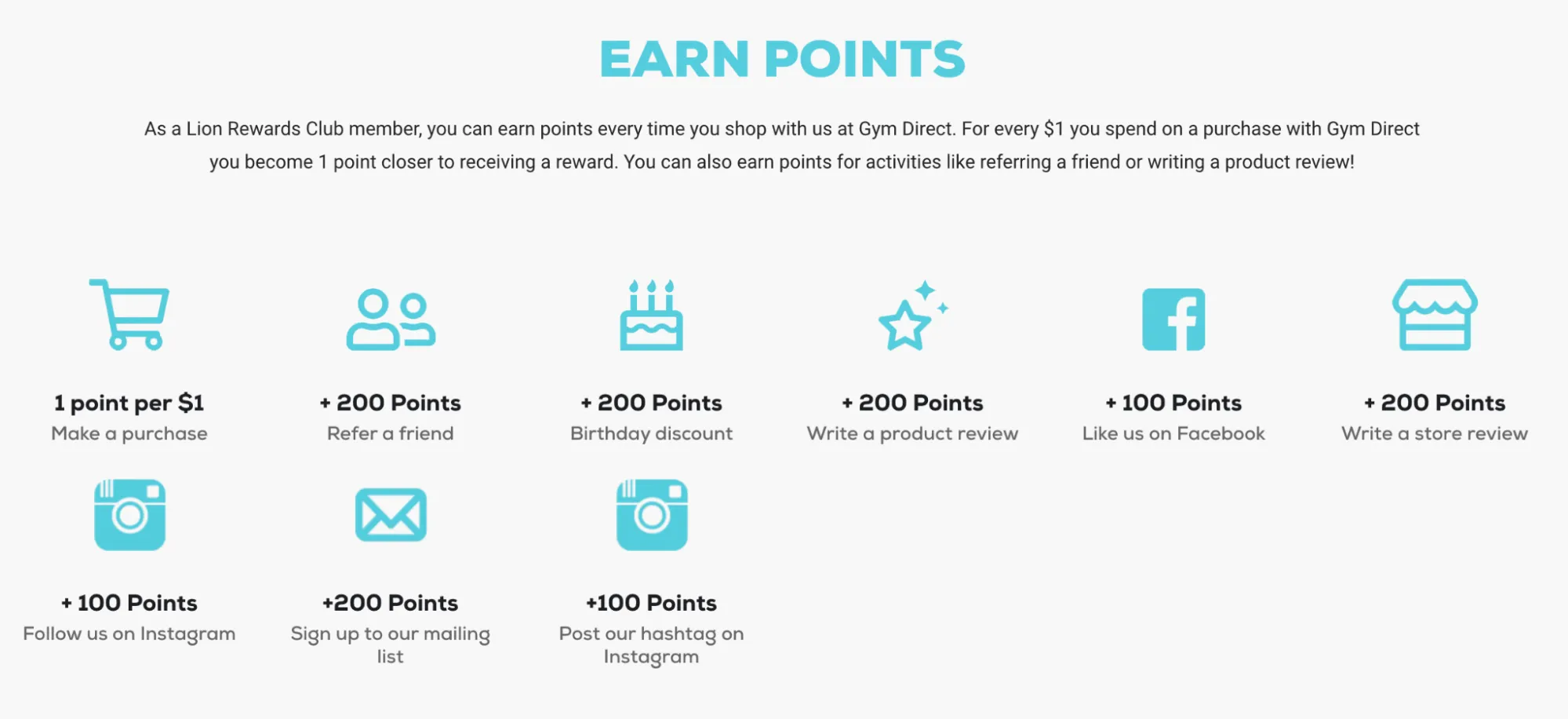
Simply put, instead of one-time incentives, you create a structured path where every purchase adds up to bigger rewards. Some popular models include:
- Point-based systems (earn 1 point per $1 spent)
- Tiered memberships (Silver, Gold, Platinum)
- Experiential perks (early access to launches, exclusive gifts).
Regardless of your preference, the structure must be simple enough for customers to understand immediately.
And once you have made a decision, integrate your chosên program into every touchpoint: show points earned on receipts, display balances in account dashboards, and send periodic emails reminding members of upcoming milestones. If customers know they are close to redeeming a reward, they're less likely to defect!
#21. Test multiple cart recovery tactics
Although loyalty programs are amazing eCommerce promotion ideas, cart abandonment remains an inevitable challenge. The global abandonment rates averaged over 70%, meaning recovering even a fraction can have a huge impact on revenue!
For that reason, the solution to this issue should be an integrated recovery system tested and optimized over time.
We suggest beginning with the most basic: recovery emails. These should trigger within one hour of abandonment, when intent is still fresh, and you can personalize them with product images and urgency cues (“Items are almost sold out”).

After that, you can layer in retargeting ads across social platforms to remind customers of what they left behind. For on-site tactics, use exit popups or checkout nudges like limited-time discounts or free shipping triggers.
The most crucial step, however, is experimentation. You should A/B test subject lines frequently (e.g., “Your cart misses you” vs. “Complete your order now for 10% off”) and monitor which tactics perform best by customer segment. By running continuous tests this way, you can refine your recovery playbook over time and, ultimately, reclaim sales that would otherwise be lost.
#22. Display promotions clearly on the homepage
As indicated earlier, even the best promotions lose impact if shoppers can't find them!
Your homepage is usually the highest-traffic entry point, and it needs to act as a showcase for live offers. Unfortunately, the mistake many stores make is burying promos in secondary banners or popups that customers dismiss without reading.

Instead, you should use the first fold of the homepage (before scrolling begins) to highlight the main campaign. That could be a hero banner with concise copy and a visible CTA, like “20% off sitewide – shop now.”
And remember, consistency matters as much as placement when it comes to these eCommerce promotion ideas. Once a shopper clicks in, the promotional message should echo across subpages: the category grid, product pages, and cart. Without this continuity, your customers may doubt whether the promotion is still valid!
#23. Pair bestsellers with slow-moving products
Sure, homepage visibility sets the stage. But once customers begin browsing, you can guide their cart composition.
A proven way to do this is by pairing your most popular items with slow-moving stock. Shoppers often come looking for the products everyone else buys, so attaching less popular inventory to these high-demand items turns one purchase into two.
The bundles should feel natural, not forced. For example, you can match a trending skincare serum with a slower-selling cleanser from the same line. Also, pricing should frame the bundle as a win, even if the customer hadn't planned to buy the secondary item. Present the offer as “Complete the set” or “Bundle and save,” so that the shopper feels like they're upgrading their order, not doing you a favor!

#24. Let customers build their own bundles
Although we did discuss bundle options earlier, sometimes the most powerful promotion is giving customers full control!
In fact, allowing shoppers to build their own bundles turns a static discount into an interactive experience where they feel in charge of customizing their order. That sense of agency increases perceived value because the shopper isn’t just buying what you tell them to: they’re curating their own “deal.”

For this strategy, you should choose a product collection that lends itself to mixing and matching. For instance, fashion retailers might create a “Pick 3 Tops” bundle, or beauty brands could run “Build Your Skincare Routine.”
Once the range is defined, configure your eCommerce platform’s discount engine to trigger when the right number of items are added. And over time, analyze which combinations sell best. If customers frequently pair Product A with Product B, consider bundling them permanently or promoting them as a “trending bundle” to inspire future buyers!
#25. Offer more than just subscription discounts
Once shoppers enjoy customizing bundles, subscriptions are the logical next step for ongoing engagement!
Unfortunately, many brands mistakenly lean on discounts alone, which quickly loses appeal. To make subscriptions stick and for these eCommerce promotion ideas to work, you need to build an ecosystem of benefits that extends beyond price.
The first step is flexibility. Many shoppers hesitate to subscribe if they fear being locked in, so you can offer options to pause, skip, or change delivery frequency directly in the customer account dashboard. Also, make the process intuitive and transparent; if canceling feels like a hidden maze, trust collapses and churn rises.

Next, you should consider layering perks that resonate with your customer base:
- For consumables, free shipping on all recurring orders adds steady value.
- For lifestyle brands, consider giving subscribers first access to limited-edition products or early entry into seasonal sales.
Also, if the category supports it, you can add experiential rewards such as “exclusive how-to tutorials” or private community access. And make sure to frame the subscription as an upgrade, not a cost-cutting trick!
#26. Create AI-powered personalized recommendations
After strengthening subscriptions with layered perks, the next step is to deepen personalization even further. Modern customers no longer accept generic “You might also like…” lists; they expect product suggestions that reflect their browsing, purchase history, and even situational context!
Fortunately, many AI tools make it possible to serve promotions that adapt in real time to each shopper's intent. For example, if a visitor spends three minutes on the running shoes page but doesn't buy, your site can surface matching socks or sports insoles with a limited-time discount. Even better, AI engines can respond to conditions like local weather or seasonality. Your site can surface “Rainy Day Deals” on umbrellas for shoppers in rainy regions or “Back-to-School Bundles” for visitors in late August!

#27. Host random acts of kindness days
Speaking of personalization, kindness days can also help broaden the emotional connection with your customers.
These eCommerce promotion ideas are simple: surprise your customers on an ordinary day with unexpected perks. The strategy works precisely because it breaks patterns: shoppers expect discounts on Black Friday, but they don't expect free shipping and a mystery gift on a random Tuesday.
Additionally, you should encourage shoppers to share their reactions on social media and repost them (with permission) to highlight the joy your brand brings. Over time, people will check back more often, wondering when the next surprise may drop.

#28. Add urgency triggers across your store
Surprise creates delight, but urgency creates action!
Urgency triggers push hesitant customers to complete purchases by reminding them that the opportunity is fleeting. These can take multiple forms: countdown timers on banners, “Only 3 left” messages on product pages, or reminders that a discount expires within hours.
To implement effectively, authenticity is key:
- If the stock is genuinely low, show the number transparently.
- For promotions, be specific: “Ends in 6 hours” is stronger than “Limited time.”
- Embed urgency in multiple touchpoints, such as homepage banners, product cards, and even in-cart notifications, so shoppers feel a consistent nudge.

Still, keep in mind that misuse backfires: fake countdowns or exaggerated scarcity erode trust quickly. Remember that the goal is to make customers act decisively, not to manipulate them into regretted purchases!
#29. Offer exclusive VIP or member deals
Aside from services for general shoppers, you should take care of your best, higher-spending customers as well.

First, define who qualifies as a VIP – perhaps loyalty program enrollees, newsletter subscribers, or those who spend above a threshold. Then, communicate the exclusivity clearly: “Only for our VIPs” or “Members get 24-hour early access.”
VIP or member-only deals can build loyalty by creating a club-like experience. And the best part? These eCommerce promotion ideas don't have to be complicated. Early access to sales, members-only discounts, or bonus loyalty points are enough to make them feel valued!
#30. Run brand-collaboration giveaways
Nurturing existing members is important, but have you ever thought about expanding your reach to fresh audiences? That's where collaborations with complementary brands can work in your favor!

The key is alignment: if you sell coffee equipment, partner with a specialty roaster; if you sell fitness gear, collaborate with a nutrition brand.
And, if possible, you may consider co-creating a prize package and promoting it across both brands' channels. Most importantly, after the giveaway, follow up with a tailored welcome campaign that references the collaboration, so your leads feel a sense of continuity rather than a cold sales pitch.
#31. Host social media contests & giveaways
Collaborating with partner brands is one thing, but you also need to sustain engagement on your own channels.
From our experience, social media contests are a powerful tool for these eCommerce promotion ideas, as they give your audience an active role in spreading your brand’s message. The core idea is to keep mechanics simple but exciting. Simply ask your followers to tag friends, post a photo with your product, or share a story with your branded hashtag!

Plus, execution doesn’t end once the contest is live. Throughout the campaign (and even after), you can reshare user submissions in Stories or Reels to amplify reach and signal social proof. Additionally, when announcing winners, ensure that you do so publicly and link to a landing page that showcases the best entries, featuring shoppable links.
#32. Introduce one-day birthday specials
Some customers expect brands to remember milestones like birthdays. Sending a personalized birthday reward, therefore, can make the interaction between them and your brand feel more special. According to Omnisend’s 2025 benchmarks, birthday emails achieve an average open rate of 43.3% and a conversion rate of 14.3%, far higher than typical promotional emails!

The simplest approach is to capture the date of birth during signup or loyalty enrollment, then automate a one-day promotion sent via email or SMS. That could be a percentage discount, a free product, or a limited-time credit!
And to make it frictionless, you can use pre-applied codes that activate automatically when customers click the email link. This simple strategy avoids the annoyance of manual entry and reinforces the feeling of being gifted. Also, consider curating a small “birthday favorites” collection so customers see ready-to-buy suggestions rather than needing to browse.
#33. Incentivize survey participation
Birthday offers strengthen emotional goodwill, which is the perfect time to ask for feedback. However, from our observation, many surveys often suffer from low completion rates unless tied to incentives!
A 2025 Gallup methodology analysis found that higher cash incentives materially increased response rates (21.4% with a $5 incentive vs. 16.8% with $1) and sped up data collection. Hence, to increase participation, you should design short, focused surveys that take less than three minutes and offer a small but immediate reward for completion. Examples include a $5 credit, a discount code applied instantly, or loyalty points added to the customer’s account.
And for these eCommerce promotion ideas, the placement of surveys matters as much as the incentive. In many cases, post-purchase thank-you emails are a natural channel because customers are still thinking about their order. Another option is to embed a survey link in account dashboards with a visible reward icon, and the survey itself should clearly communicate progress with a bar or step counter to reassure participants that it won’t drag on.

#34. Set a single goal for each promotion
It's important to try out different marketing strategies and promotions. However, keep in mind that chasing all of them at once dilutes results!
Each promotion should begin with only one clearly defined objective. For example, if acquisition is the goal, then the campaign should be built around capturing new signups, with offers tailored specifically to first-time buyers. Similarly, when clearing excess stock is the goal, the messaging should highlight urgency and value in bundles or markdowns, rather than distracting with sitewide codes.

Plus, you should align every component (creative, placement, CTA, and incentive) with that one KPI. For example, a “spend $100, get $20 off” offer should not also ask for newsletter signups. The dual message confuses customers and muddies attribution. Instead, run sequential campaigns: first a list-growth drive, then a spend-threshold promo.
#35. Offer discounts with mega-reach
Once you've learned to focus promotions tightly, you can broaden impact through mega-reach promotions.
Executing these eCommerce promotion ideas requires only two steps. First, you should standardize the discount so it's easy to communicate at scale (for example, “15% off all full-priced products, year-round.”). Such consistency makes it easy to promote through mass channels, such as coupon directories, student discount hubs, or nationwide partner newsletters.
Second, ensure frictionless eligibility verification so the promotion remains sustainable. We have tried several methods, and so far, tools like SheerID, ID.me, or built-in coupon aggregators are the most effective in automatically validating identities and minimizing misuse.

#36. Feature referral program rewards
Another promotion idea to consider is referrals, which remain one of the most cost-efficient acquisition tactics. After all, they harness the enthusiasm of customers who already love your brand.

But, of course, simply having a referral program isn't enough; the way you structure rewards determines whether people actually use it.
Based on our experience, the most effective programs are two-sided, meaning both the referrer and the referred friend receive something tangible. For example, “Give $10, Get $10” communicates fairness and simplicity at a glance.
Every customer should have a unique share link available in their account dashboard and post-purchase confirmation page. Plus, your site should display pending and earned rewards clearly in the customer's account, so that they can see the actual progress.
#37. Promote eco-friendly refill discounts
Many shoppers want to make sustainable choices, but cost often gets in the way. Hence, by offering reduced prices on eco-friendly refills, you not only reinforce your brand's environmental commitment but also give customers a clear financial reason to come back!

These eCommerce promotion ideas start with packaging: you should design refill packs that minimize waste and are compact for shipping. Also, make sure to promote the difference directly on product pages with side-by-side comparisons: “Save 20% and reduce packaging waste by 70% with our refill option.” The copy should position refills as the smarter, more responsible choice, not just the cheaper one!
#38. Collaborate with affiliates to expand reach
Earlier, we did talk about partnering with complementary brands. If that's not something you can afford at the moment, let us show you another alternative: affiliates.

An affiliate program essentially turns bloggers, influencers, and niche publishers into your extended sales force by paying them commission on referred sales. This model works because affiliates already have built-in trust with their audiences, meaning when they recommend your product, it feels like a personal endorsement rather than an ad!
The relationship between you and your affiliates should be nurtured like any partnership: share updates, recognize top performers, and keep communication open. When done right, this strategy can give you exposure across multiple channels at once, multiplying your promotional footprint far beyond what paid ads alone could achieve!
#39. Hype up brand-specific holidays
At some point during the year, you also need moments of peak excitement that set your brand apart. Brand-specific holidays do just that by creating your own calendar event that customers anticipate each year!
These could tie into broader cultural moments like National Coffee Day (if you're a café brand), or something unique, such as your store's anniversary. Once you've picked a date (or two), create a landing page and design festive banners, just like you would on a “normal” sales day.

Plus, the offers themselves should be memorable, including limited-edition products or special bundles only available during that holiday. If the event is successful, your customers will be more likely to remember and return the following year!
#40. Use social proof to build trust
As briefly mentioned in previous sections, social proof is what helps that traffic convert. After all, every average shopper wants the reassurance that others like them have already had positive experiences with your brand!

Reviews, testimonials, user-generated photos, and influencer shout-outs all act as proof points that reduce hesitation. You can integrate them into the product pages, or even take it one step further and highlight positive feedback in your promotional emails! That way, the consistency will keep credibility visible at every stage, turning excitement into trust and ultimately into sales.
#41. Focus on post-purchase engagement
Even after you have closed your sales, the relationship with customers shouldn't end at checkout! In fact, the post-purchase stage is a critical moment when customers are most emotionally connected to your brand. So, if you leave that moment silent, you lose the momentum that could turn one-time buyers into loyal advocates.

To implement these eCommerce promotion ideas, you can start with thank-you emails that feel personal and include useful tips for using the product, links to tutorials, or recommendations for complementary items. After that, nudge customers to join your loyalty program or share photos of their purchase to feed back into your social proof loop.
You can also run creative challenges post-purchase, such as “share your unboxing for a chance to win” or “complete a quick quiz to earn bonus points.” When treating post-purchase engagement as part of your promotional cycle, you extend the lifetime value of every order and strengthen your brand connection in the process.
#42. Start blogging
Selling tactics aside, blogging is also a good way to help you consistently attract new potential customers. Not to mention, it also establishes your brand as an authority while boosting search visibility.

To create a successful blog post, you must first identify the main questions and problems your target audience is searching for.
Once done, create articles that address these topics while naturally weaving in your products. For example, if you're a fitness business, you could publish “How to Build a Home Gym on a Budget” and include links to your equipment. Also, remember that regular publishing is key; even one or two posts a week will add up gradually.
#43. Strengthen SEO to drive organic traffic
Blogging is a strong starting point for eCommerce promotion ideas, but only with technical SEO can you ensure that your blogging (and the store as a whole) benefits. After all, if the site is slow or poorly structured, no amount of great content will rank!

Some key elements you should pay attention to:
- Site speed: Ensure you compress images, streamline code, and maintain reliable hosting. Mobile optimization is equally crucial since most shoppers browse on their phones.
- Keyword research: Optimize product titles, meta descriptions, and on-page copy to match the language customers use when searching. Plus, add structured data markup so search engines can display rich snippets (e.g., star ratings or price ranges).
- Performance monitoring: Use Google Search Console to track impressions, clicks, and technical errors, then refine your strategy regularly.
With these strong technical SEO tactics, your blog posts and product pages will rise higher in search results, which ultimately provides a steady stream of qualified traffic even without ongoing ad spend!
#44. Gamify the shopping experience with challenges or points
As discussed, turning shopping into a system of challenges and rewards can create motivation for customers to return.
And one of the best ways to do that (without relying heavily on discounts) is to gamify the experience!

For example, customers can earn points for purchases, leaving reviews, or sharing on social media. Over time, these points can unlock tiers, badges, exclusive perks, and more.
To make it work, clear rules are extremely necessary: your customers should always know what actions earn points and how close they are to their next reward.
You can also set up a dashboard with progress bars or achievement badges to keep motivation high. Plus, for even more excitement, consider offering both small instant rewards and bigger long-term milestones to balance things out!
#45. Use live shopping events to boost urgency and engagement
Lastly, for those who need an immediate impact, live shopping events are perfect because they combine entertainment and interactivity in real-time. Your customers can watch product demos and claim limited-time deals during the event itself!

But, of course, preparation plays a huge role here. Some eCommerce promotion ideas you can consider for this event:
- Promote the event in advance with teasers on email and social media.
- Choose a handful of hero products to showcase, and script the flow so the event feels professional but still spontaneous.
- During the stream, use limited-time codes or “first 50 buyers” perks to trigger urgency.
And needless to say, the interactive element is what sets live shopping apart, so don't forget to include polls, live Q&A, and audience shout-outs to make viewers feel part of the show. Afterward, you can repurpose the recording as shoppable video content on your site and social platforms to further extend the event's life.
Best Practices to Successfully Launch a Promotion Campaign
Define clear metrics before you launch
After walking through dozens of individual eCommerce promotion ideas, it’s important to step back and think about the bigger picture.
As we already established earlier, every successful promotion must begin with clarity of purpose. So, ask yourself what you want this specific campaign to achieve: is it clearing slow-moving inventory, lifting average order value, growing your email list, or attracting new buyers?
Once you’ve identified the objective, set measurable KPIs so your team knows what success looks like. That could be conversion rate, AOV lift, or repeat purchase rate. With these benchmarks defined before launch, you avoid the trap of running flashy campaigns that create noise but don’t deliver meaningful results.
Balance creativity with operational feasibility
Having clear goals makes it easier to brainstorm bold ideas, but creativity alone won’t carry a campaign if your operations can’t keep up. A “deal of the day” may excite shoppers, but if fulfillment is delayed or customer service is overwhelmed, the positive buzz quickly turns sour!
That is why the best eCommerce sales promotion ideas are planned in collaboration between marketing, operations, and support teams. Before launch, validate that stock levels, logistics, and backend systems can handle the expected spike. And if you’re introducing something new, such as a referral reward system or gamified loyalty program, test it with a smaller segment first.
Optimize continuously with data-driven iteration
Even when a campaign runs smoothly, the work isn’t over; tracking performance in real time lets you adjust your promotion ideas for eCommerce quickly. For example:
- If a countdown timer drives more conversions, roll it out to additional products.
- Or, if a referral incentive sees little traction, experiment with a different reward structure.
Once the campaign nears its end, circle back to the objectives and KPIs you set at the start to compare actual performance to your targets and feed those learnings into the next cycle. This iterative process turns promotions into a growth engine rather than a series of disconnected experiments!
eCommerce Promotion Ideas: FAQs
What type of promotion is most suitable for eCommerce?
The right kind of eCommerce promotion strategy tips depends on your goals, inventory, and customer behavior. For example:
+ If you need to move stock quickly, flash sales, BOGO offers, or clearance bundles tend to work best.
+ But if you’re focused on acquisition, first-time buyer discounts or referral incentives make more sense.
+ For boosting loyalty, rewards, tiered discounts, and subscription perks will have a greater impact.
Carefully choose the promotion type that aligns with your objective, and don’t force a category that doesn’t match your circumstances.
What are the 7 types of promotion?
Promotions can be categorized in multiple ways, but one broadly accepted classification includes: advertising, personal selling, sales promotion, public relations, direct marketing, sponsorship, and digital marketing.
For eCommerce specifically, “sales promotion” often breaks down further into subtypes such as flash sales, bundles, loyalty programs, coupons, free gifts, referrals, and limited-time offers.
What are the 4 Ps of marketing in eCommerce?
The classic 4 P’s – Product, Price, Place, and Promotion – remain foundational even in digital commerce:
+ “Product” includes your offer, variants, and messaging
+ “Price” encompasses your discount strategies, margin, and pricing psychology
+ “Place” considers the channels where customers find you (your store, marketplaces, social platforms)
+ “Promotion” is how you drive awareness, urgency, and conversion.
What additions can you make to promote eCommerce?
Beyond sales and deals, promotions can leverage content, community, and systems:
+ Adding educational content (blogs, videos, guides) that support product launches.
+ Harnessing user-generated content and influencer campaigns to drive trust.
+ Spinning themed events or holidays around your brand (e.g., brand anniversaries, cause days).
+ Building referral engines so your customers become promoters.
These “additions” turn promotions from one-off tactics into interconnected systems that reinforce each other and amplify growth.
Conclusion
So, we have explored all 45 eCommerce promotion ideas!
Not every tactic here will be right for your business, however, and that’s the point. The value is in trying, refining, and finding the mix that makes sense for your audience. Patience will pay off, and soon, you'll uncover the right strategies that consistently bring people back.
For more tips and guidance, check out our blogs and join our Facebook Community.
